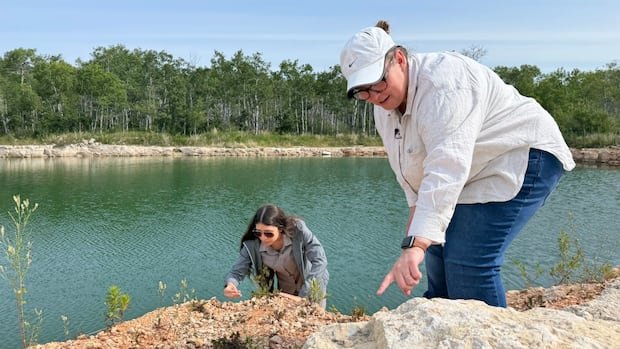On a sunny day in July, paleontologist Melina Jobbins and her team explore an old rock quarry near Lundar, Manitoba, in search of 390-million-year-old fossils of an extinct fish that inhabited an ancient inland sea. Jobbins, a postdoctoral fellow at the PaleoSed+ lab in the University of Manitoba’s earth sciences department, uses a geological map to identify the era from which they can expect to discover fossils in this region, now part of the Canadian Prairies.
Describing the Devonian period as the Age of Fishes, Jobbins shares insights with Kirstin Brink, another paleontologist at the University of Manitoba. The area had previously unveiled ancient fossils in the 1990s, which intrigued researchers. Through Jobbins’ study and discovery of additional fossils, a new find emerged – a fish species with unique characteristics, including body armor, a jaw, and teeth.
Renaming the fish as Elmosteus lundarensis after the Elm Point Formation where it was unearthed, Jobbins’ findings were published in the Journal of Systematic Palaeontology’s July edition. These fish remnants predate dinosaurs by approximately 150 million years and measure around 1½ meters in length, akin to a large Chinook salmon.
Jobbins expresses hopes of uncovering more of these ancient fish, emphasizing the significance of understanding their evolution and features alongside their relatives, the placoderms. Observing the fossils at the university’s Geological Sciences Museum, Jobbins points out the unique characteristics of the fish, highlighting their dermal bone armor on the head and thorax, with the rest of the skeleton composed of cartilage resembling sharks.
The team’s quest for more fossils continues as they explore various quarries this summer, aiming to unravel more mysteries surrounding the ancient fish’s appearance, environment, and evolutionary conditions. Manitoba’s rich fossil record, displayed at the Canadian Fossil Discovery Centre in Morden, underscores the province’s significance in paleontological research.
With a wealth of fossils exposed due to mining activities, Brink shares the excitement of stumbling upon numerous fossils during their expedition. Despite not finding Elmosteus lundarensis on this occasion, the team remains determined to continue their search, buoyed by the support and enthusiasm of locals like Virgil Johnson, the reeve of the rural municipality of Coldwell, who facilitated their quarry access.
Johnson, reminiscing about his childhood discoveries in the quarries, expresses delight at witnessing experts unravel the region’s ancient past. Manitoba’s diverse rock ages provide a unique glimpse into the evolution of life throughout different time periods, making it a prime location for paleontological exploration.
In the quest for more discoveries and answers, Jobbins and her team persist, eager to unveil the secrets of Manitoba’s ancient past and the evolution of its prehistoric inhabitants.

